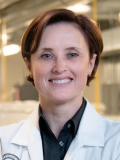Table of Contents
Definition / general | Essential features | Terminology | Donor screening | Tissue recovery | Laboratory | Processing | Storage | Records | Case reports | Sample assessment and plan | Additional references | Board review style question #1 | Board review style answer #1Cite this page: Helander L, Annen K. Tissue banking. PathologyOutlines.com website. https://www.pathologyoutlines.com/topic/transfusionmedtissuebanking.html. Accessed April 18th, 2024.
Definition / general
- Retrieval, storage and distribution of human tissues for medical use (AATB: Standards of Tissue Banking [Accessed 16 October 2020])
- Tissue can be retrieved from both living and deceased donors for autologous or allogeneic use depending on tissue type
- 58,000 donors recovered annually, providing over 3.3 million tissue grafts from 120 accredited tissue banks in the United States (AATB: Who We Are [Accessed 16 October 2020])
- Most common transplants
- Allografts: bone, tendons / ligaments, corneas
- Autografts: skull flaps recovered from craniotomies
Essential features
- Includes bone, cardiac (e.g. valves) and vascular tissue, corneas and retinas, dura mater, reproductive tissue (including gestational tissue), skin and cellular tissues
- Does not include organ transplant (liver, kidney, heart)
- Most allogeneic tissue does not require ABO or human leukocyte antigen (HLA) compatibility
- Processing removes the majority of cellular material (Clin Lab Med 2005;25:473, Clin Lab Med 2005;25:499)
- Pooling of multiple donor tissues is not permitted (FDA: Electronic Code of Federal Regulations Title 21.1271.220(b) [Accessed 20 November 2020], Clin Lab Med 2005;25:487)
Terminology
- AATB: American Association of Tissue Banks
- Allograft: tissue transplanted into a genetically different individual
- Autograft: tissue implanted into the person from whom it was recovered
- DRAI: donor risk assessment interview
- FDA CBER: Food and Drug Administration Center for Biologics Evaluation and Research
- FDA CFR: Food and Drug Administration Code of Federal Regulations
- Xenograft: tissue transplant from one species to another
- Consent: informed consent obtained from donor or authorized person
Donor screening
- Tissue donor screening:
- Donor risk assessment interview (DRAI) conducted with donor or designee
- Physical assessment performed on all living and deceased allogeneic donors
- Relevant medical records review
- Autopsy report (if available)
- Donor exclusion criteria similar to whole blood donation
- If patient was transfused blood or colloids within 48 hours of asystole or crystalloids within 1 hour of asystole, plasma dilution must be assessed
Tissue recovery
- All tissue is collected aseptically using standard surgical preparations
- Skin prep must occur within 15 hours of asystole if donor’s body not cooled / refrigerated
- If donor body cooled / refrigerated within 12 hours, skin prep for recovery must occur within 24 hours of asystole
- If removed from cooling, cumulative noncooled time may not exceed 15 hours (AATB: Standards of Tissue Banking [Accessed 16 October 2020])
Laboratory
- Donor testing:
- FDA regulations require donors be screened to prevent infectious, malignant or structurally defective tissues from use
- AATB also requires donor screening as part of its accreditation standards (FDA: Code of Federal Regulations Title 21 Part 1270 [Accessed 19 October 2020], Clin Lab Med 2005;25:473)
- Infectious disease testing: performed within 7 days prior to or after donation for allogeneic tissue (exception: oocyte donors within 3 days prior to or 7 days post donation)
- Includes: HIV 1 / 2, hepatitis B, hepatitis C, syphilis, West Nile virus
- If tissue leukocyte rich (e.g. semen), test HTLV I / II
- FDA regulations require donors be screened to prevent infectious, malignant or structurally defective tissues from use
- Plasma dilution:
- Pretransfusion blood specimens should be used for donor infectious disease testing when the donor is known / suspected to have received large volume transfusion prior to death defined as:
- > 2,000 mL of whole blood, RBCs, colloids within 48 hrs prior to asystole
- > 2,000 mL of crystalloids within 1 hr prior to asystole
- Tissue banks can define more specific algorithms to assess plasma dilution if justified
- Pretransfusion blood specimens should be used for donor infectious disease testing when the donor is known / suspected to have received large volume transfusion prior to death defined as:
- Tissue testing:
- Detection of certain virulent organisms can result in discard
- Includes: Clostridium, fungi, Streptococcus pyogenes (Group A streptococcus) and additional exclusionary organisms for skin (Enterococci, Staphylococcus aureus, gram negative bacilli)
- Detection of certain virulent organisms can result in discard
- Reference: AATB: Standards of Tissue Banking [Accessed 16 October 2020]
Processing
- Depends on tissue type and expected use (Clin Lab Med 2005;25:499):
- Bone demineralization
- Chemical disinfection / sterilization: detergents, antibiotics, ethanol
- Chemical preservation
- Dehydration / desiccation
- Fresh / refrigerated (0 - 10°C): birth tissues, musculoskeletal tissue and osteoarticular grafts, skin, cellular tissue
- Freezing / cryopreservation: birth tissues, cardiac / vascular tissue (-100°C), musculoskeletal tissue and osteoarticular grafts ([-20] - [-40]°C), skin (-40°C), cellular tissue, reproductive tissue (liquid nitrogen)
- Lyophilization: skin (ambient temperature storage, temperature monitoring not required)
- Fresh allografts are highly antigenic; HLA should be considered (Clin Lab Med 2005;25:473)
Storage
| Tissue Type | Storage Temperature / Time | Uses |
| Amniotic / chorionic membrane | Validated by tissue bank | Wound care, neurosurgery and spinal surgery, burns |
| Cardiac / vascular tissue | Cryopreserved (≥ -100°C) | Congenital cardiac repairs, valvular insufficiency, bypass grafting, tissue revascularization |
| Corneas - for keratoplasty | 2 - 8°C (14 days) | Keratoconus correction |
| Musculoskeletal tissues - fresh | 1 - 10°C (5 days) | Skeletal reconstruction, bony defect fillers, dental implants, spinal fusion |
| Musculoskeletal tissues - frozen | (-20) - (-39)°C (< 6 months) ≥ -40°C (≤ 5 years) | |
| Reproductive tissue - semen and ova | ≥ -40°C (liquid / vapor phase nitrogen) | Infertility |
| Reproductive tissue - other than semen and ova | Validated by tissue bank | |
| Skin - refrigerated | 0 - 10°C* | Burn treatment, wound care |
| Skin - frozen | ≥ -40°C | |
| Skin - lyophilized | Ambient** |
**Does not require temperature monitoring
References: AATB: Standards of Tissue Banking [Accessed 16 October 2020], Clin Lab Med 2005;25:499, Clin Lab Med 2005;25:587
Records
- Tissue records (donor consent, eligibility, processing, storage, distribution) maintained for at least 10 years after date of tissue distribution, transplant, disposition or expiration (whichever is longest)
- Reference: AATB: Standards of Tissue Banking [Accessed 16 October 2020]
Case reports
- 4 year old girl with osteoarticular allograft reconstruction of posttraumatic skeletal defect (Injury 2016;47:2473)
- 23 year old man with autologous strut grafting repair in femoral nonunion (Chin J Traumatol 2011;14:241)
- 28 year old woman who developed Creutzfeldt-Jakob disease following dural graft (J Neurosurg 1988;69:766)
Sample assessment and plan
- Procurement eligibility: A 16 year old boy is pronounced deceased at the scene of a motor vehicle accident in a remote town following a heavy snowfall and temperatures below freezing. Time of death is unknown. Deceased was last seen alive by his parents approximately 6 hours earlier. Family has expressed an interest in organ and tissue donation.
- Assessment: As time of death is unknown, time last seen alive is used as the surrogate for asystole in tissue donation. Based on environmental conditions, the deceased can be considered cooled within 12 hours of death and is therefore a candidate for tissue recovery for 24 hours since last seen alive.
- Plan: Parents would be immediate next of kin with legal authority in this case.
- Gain informed consent from parents regarding donation process.
- Inform local tissue procurement agency of potential patient:
- Agency will perform DRAI with family, access all necessary medical records and perform procurement once acceptability determined.
Additional references
Board review style question #1
A 42 year old woman with no known medical history arrives in critical condition to the emergency room by ambulance following a pedestrian versus automobile accident. The patient undergoes multiple transfusions in an attempt to resuscitate but ultimately succumbs to her injuries. The patient's family is at the bedside and expresses their wish to have the patient be an organ and tissue donor. Is this patient a candidate for tissue donation based on the information provided below?
Height: 163 cm
Weight: 55.3 kg
Hemoglobin (pretransfusion sample): 6.5 g/dL
Hematocrit (pretransfusion sample): 20%
Volume of red blood cells transfused: 728 mL
Volume of crystalloids transfused: 2,250 mL
Height: 163 cm
Weight: 55.3 kg
Hemoglobin (pretransfusion sample): 6.5 g/dL
Hematocrit (pretransfusion sample): 20%
Volume of red blood cells transfused: 728 mL
Volume of crystalloids transfused: 2,250 mL
- No, a posttransfusion sample is not available
- No, she did not sign an organ donation card before death
- Yes, as long as a pretransfusion sample is available due to posttransfusion hemodilution
- Yes, based on her age, no additional information is needed
Board review style answer #1
C. Yes, as long as a pretransfusion sample is available due to posttransfusion hemodilution. Based on the volume of crystalloids and red blood cells received, this patient would be hemodilute following resuscitation and accurate infectious disease testing would not be able to be performed unless a pretransfusion sample is available. For tissue banking, the total colloid / crystalloid volume received must be less than 2,000 mL. In this case, the patient received 2,250 mL of crystalloid, which is greater than 2,000 mL (and greater than her plasma volume of 2,212 mL). As long as no high risk behaviors are identified during the DRAI interview and her physical exam is unremarkable for high risk behaviors, she would be a candidate to donate.
Comment Here
Reference: Tissue banking
Comment Here
Reference: Tissue banking



